- Granted patents : EP2 836 539; US10,329,232; US11,124,617 and CN104487496
Patents
Materials Coated with Calixarenes
Nanomaterials Coated with Calixarenes
-
PCT/EP2021/053170 publication n° WO2011/160654
Articles
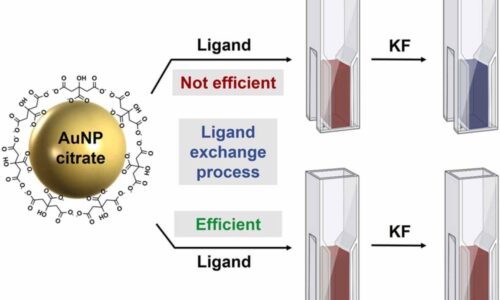
A fluoride-induced aggregation test to quickly assess the efficiency of ligand exchange procedures from citrate capped AuNPs
Fluoride was used to evaluate the efficiency of a ligand exchange process from AuNPs-citrate with five standard types of ligands. The relationship between the aggregation level of the…
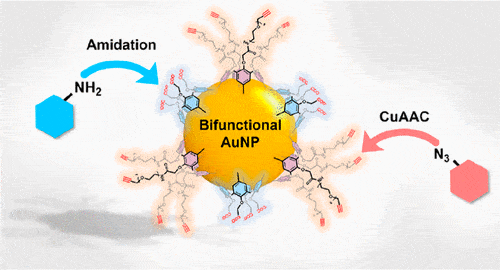
Bifunctional Calix[4]arene-Coated Gold Nanoparticles for Orthogonal Conjugation
Gold nanoparticles (AuNPs) are currently intensively exploited in the biomedical field as they possess interesting chemical and optical properties. Although their synthesis is well-known, their…
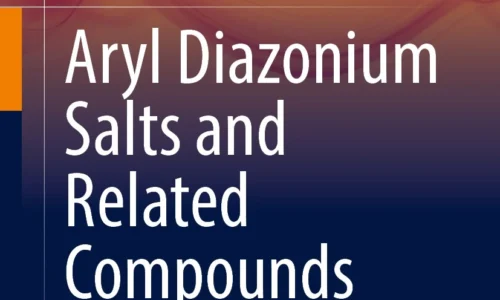
Modification of Surfaces with Calix[4]arene Diazonium Salts
Since their first report in 2012, calix[4]arene tetradiazonium derivatives have experienced a growing interest. They now represent a favored method to obtain robust post-functionalizable…
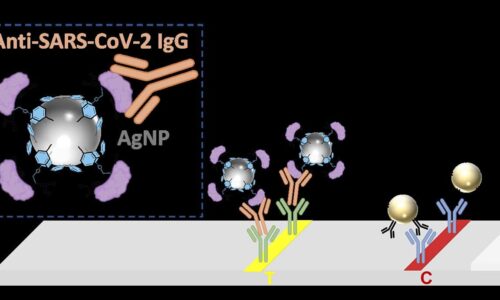
Ultra-stable Silver Nanoparticles for Rapid Serology Detection of Anti-SARS-CoV-2 Immunoglobulins G
Dipstick assays using silver nanoparticles (AgNPs) stabilized by a thin calix[4]arene-based coating were developed and used for the detection of Anti-SARS-CoV-2 IgG in clinical samples…
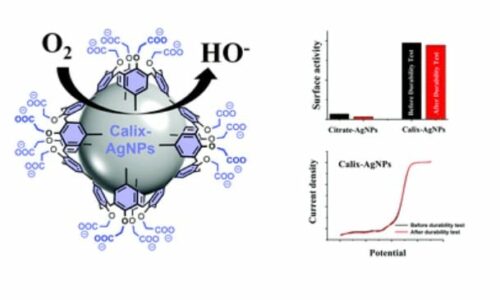
Highly stable silver nanohybrid electrocatalysts for the oxygen reduction reaction
Silver nanoparticles (AgNPs) were deliberately functionalized via aryl diazonium chemistry with a monolayer of calix[4]arenes. The resulting nanohybrids show high efficiency…

Peptide-Conjugated Silver Nanoparticles for the Colorimetric Detection of the Oncoprotein Mdm2 in Human Serum
AgNPs allow to improve the LoD by almost one order of magnitude compared to similar system based on AuNPs. This study highlights the interest of calixarene-AgNPs for developing…
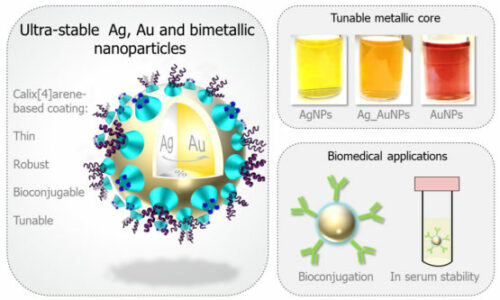
Synthesis of Ultra-Stable and Bioconjugable Ag, Au and Bimetallic Ag-Au Nanoparticles Coated with Calix[4]arenes
In this work, we present a convenient one-step synthesis strategy that allows to obtain unique gold, silver, and bimetallic NPs that combine all of the properties required for biosensing applications…
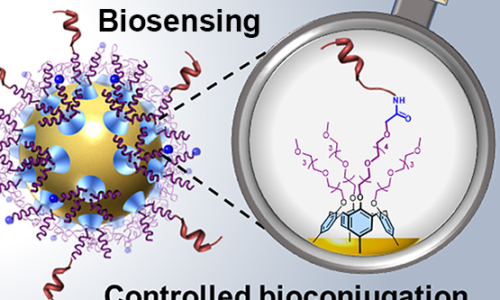
Ultra-stable PEGylated calixarene-coated gold nanoparticles with a tunable bioconjugation density for biosensing applications
We report here a novel functionalization strategy based on calix[4]arene-tetradiazonium platforms for the coating of AuNPs with a robust PEG layer and their controlled bioconjugation…
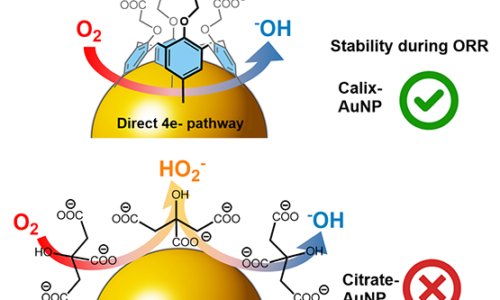
Functionalizing Gold Nanoparticles with Calix[4]arenes Monolayers for Enhancing Selectivity and Stability in ORR Electrocatalysis
Nanocatalysts coated by calix[4]arenes show enhanced selectivity and stability compared to their citrate-stabilized counterparts. These nanohybrids exhibit excellent activity with a dominant 4-electron reduction of O2…
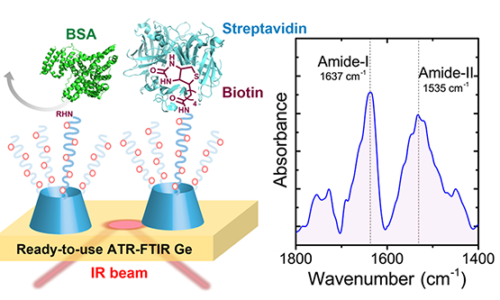
Ready-to-use germanium surfaces for the development of FTIR-based biosensors for proteins
The grafting of stable and thin organic layers on germanium surfaces remains challenging. To tackle this problem, we developed a calix[4]arene–tetradiazonium salt decorated with four oligo(ethylene glycol) chains…
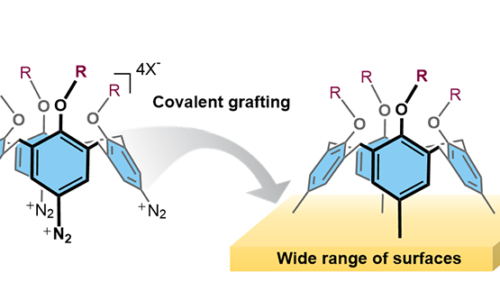
Strategies for the formation of monolayers from diazonium salts: unconventional grafting media, unconventional building blocks
In this mini review, we briefly describe the different strategies that have been developed to prepare well-ordered monolayers. We especially focus on two strategies successfully used in our laboratories…
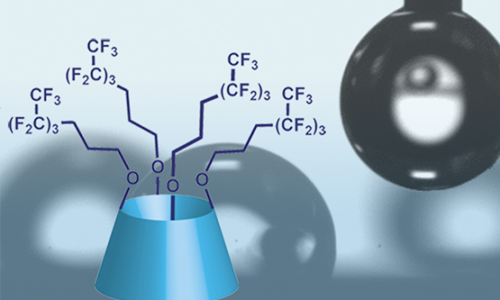
Robust Hydrophobic Gold, Glass and Polypropylene Surfaces Obtained Through a Nanometric Covalently Bound Organic Layer
Here, we describe the grafing of polyfluorinated calix[4]arenes on gold, polypropylene and glass. The modified surfaces were characterized by ellipsometry, atomic force microscopy (AFM)…
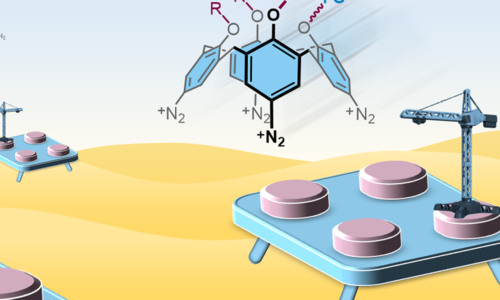
Use of calixarenes bearing diazonium groups for the development of robust monolayers with unique tailored properties
In this review, the recent advances of the use of calixarenes diazonium derivatives for the development of surfaces with controlled wettability, corrosion resistance, heterogeneous catalysis and microelectronics…
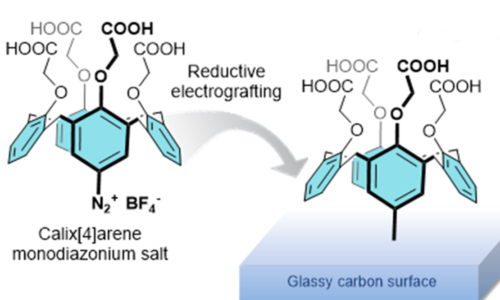
Synthesis of a Calix[4]arene-monodiazonium Salt for Surface Modification
Here, we report a calix[4]arene-monodiazonium salt that can be easily electrografted on glassy carbon electrodes. Studies of the blocking properties of the modified surfaces toward redox probes evidenced…
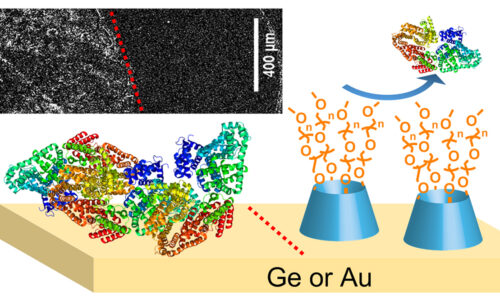
Grafting of Oligo(ethylene glycol) Functionalized Calix[4]arene-tetra-diazonium Salts for Antifouling Germanium and Gold Surfaces
Here, we report robust monolayers of calix[4]arenes bearing oligo(ethylene glycol) (oEG) chains, which were grafted on germanium and gold surfaces via their tetradiazonium salts, providing remarkable antifouling properties…
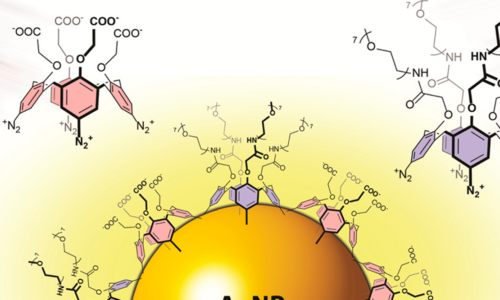
Controlled Functionalisation of Gold Nanoparticles with Mixtures of Calix[4]arenes revealed by Infra-red Spectroscopy
Here, we report a calix[4]arene-tetradiazonium decorated by four oligo(ethylene glycol) chains on the small rim, which upon grafting gave AuNPs with excellent stability thanks to the C–Au bonds…
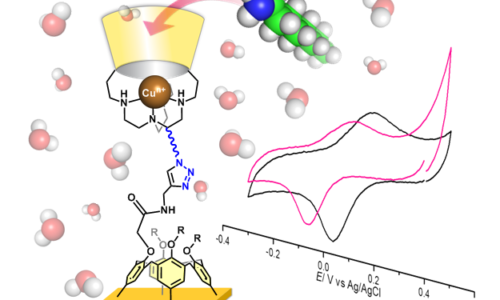
Immobilization of monolayers incorporating Cu funnel complexes onto Au electrodes. Application to the selective electrochemical recognition of primary alkylamines in water
The immobilization of a copper calix[6]azacryptand funnel complex on gold-modified electrodes is reported. Two different methodologies are described. One is based on alkyne-terminated…
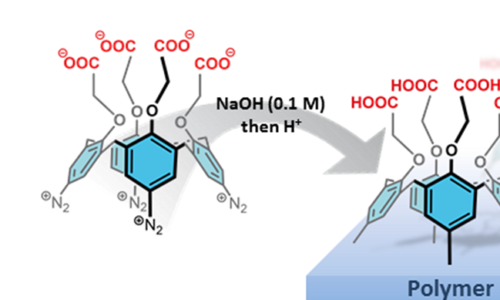
Controlled Modification of Polymer Surfaces Through Grafting of Calix[4]arene-Tetradiazoate Salts
An attractive methodology using calixarenes bearing diazonium groups has been developed for the surface modification of polymers such as polypropylene (PP), polyethylene terephthalate (PET), and polystyrene (PS)…
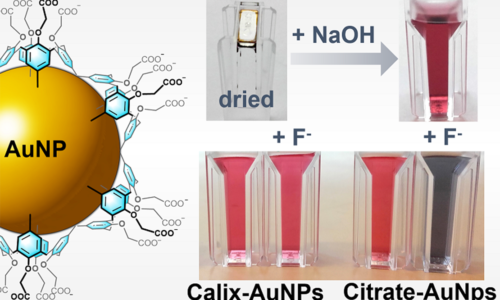
Extremely robust and post-functionalizable gold nanoparticles coated with calix[4]arenes via metal–carbon bonds
Gold nanoparticles stabilized with a thin layer of postfunctionalizable calix[4]arenes were prepared through the reductive grafting of a calix[4]arene-tetra-diazonium salt. These particles show exceptional stability…
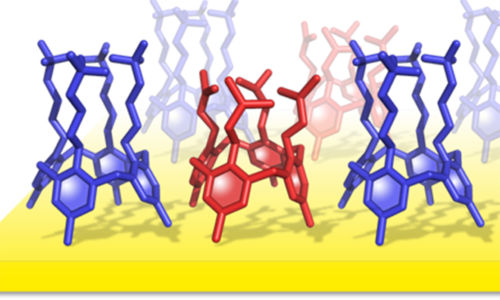
One-Pot Electrografting of Mixed Monolayers with Controlled Composition
Herein, binary mixtures of calix[4]arene-tetra-diazonium salts are electrografted to form covalently bound monolayers onto substrates for yielding versatile functionalizable molecular platforms. Wettability studies,…
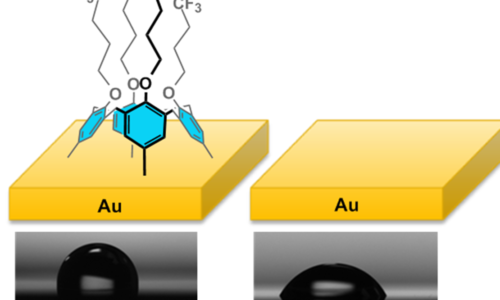
Controlled functionalization of surfaces at the molecular scale
Herein, we describe an innovative and versatile surface modification approach using calix[4]arene, that leads to the formation of highly robust and densely-packed monolayers on a large range of materials…
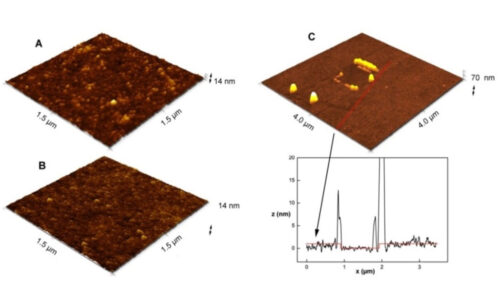
Construction de surfaces modifiées par une monocouche de calix[4]arènes : contrôle chimique et spatial à l’échelle moléculaire
La fonctionnalisation de surfaces couvre un large champ d’applications tels que les traitements de surfaces (verres anti-salissures, revêtements antibactériens, peintures facilement lessivables..), les implants biocompatibles…
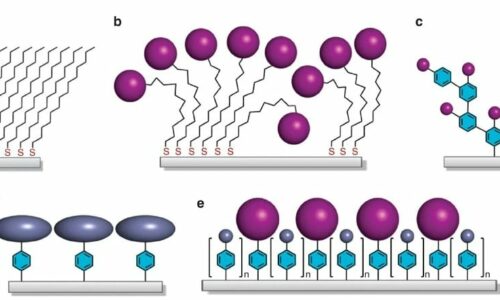
Electrografting of calix[4]arenediazonium salts to form versatile robust platforms for spatially controlled surface functionalization
An essential issue in the development of materials presenting an accurately functionalized surface is to achieve control of layer structuring. Whereas the very popular method based on the spontaneous adsorption of alkanethiols…


